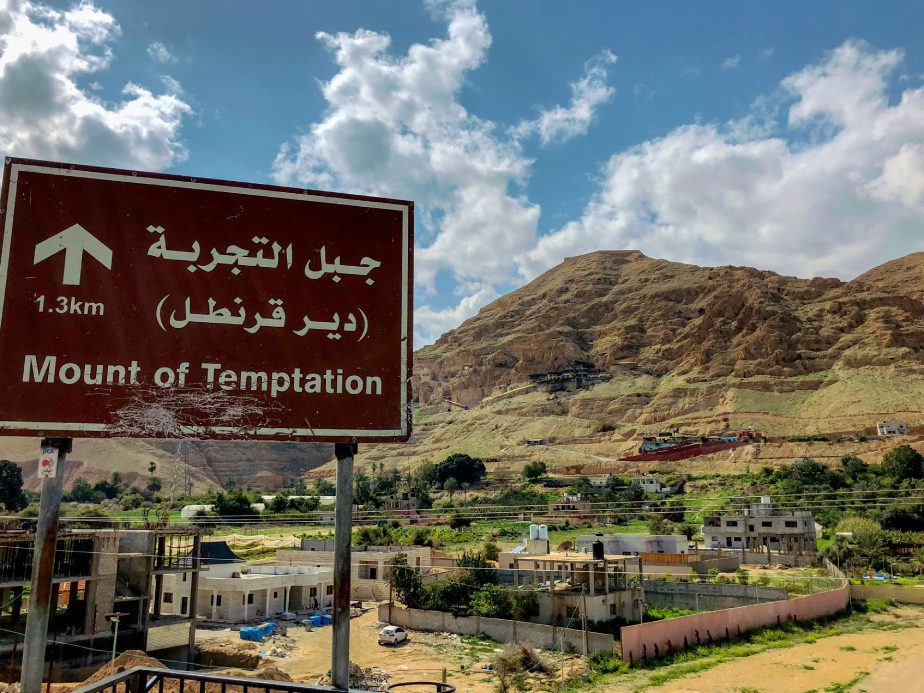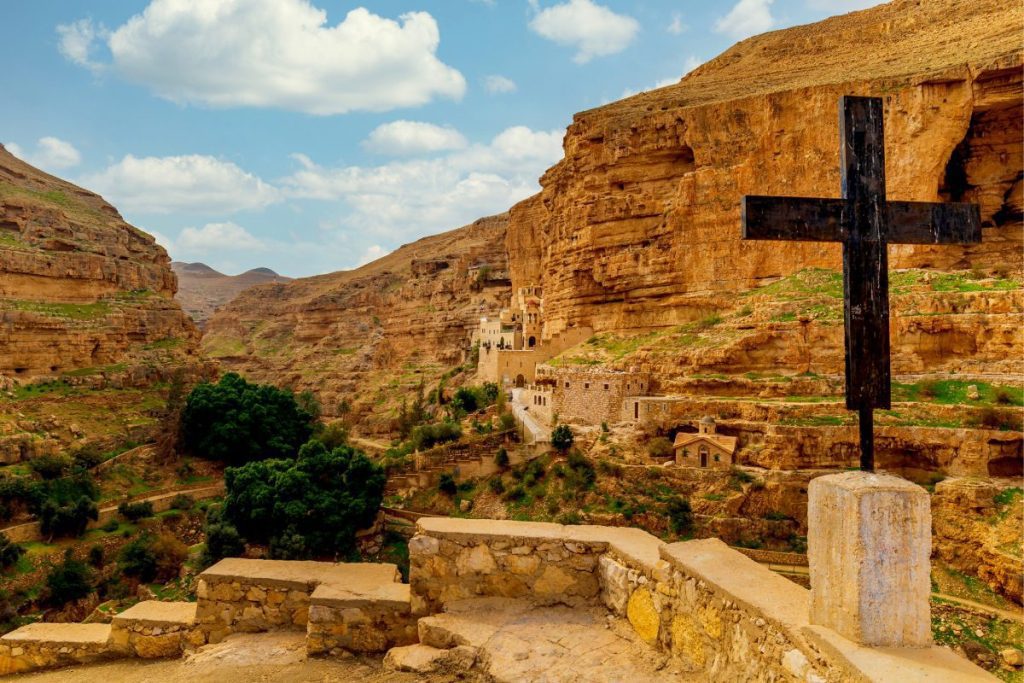Mount of Temptation is the traditional Mount located in the Judaean Desert where according to the Gospel of Matthew Jesus was tempted by the devil. According to the Synoptic Gospels, after the baptism of Jesus in the Jordan River by John the Baptist; Jesus followed the Holy Spirit into the wilderness. It was there where he fasted forty days and forty nights. During or after this period Satan tried to seduce him several times. But Jesus resisted all attempts. Then Satan turned away from him and Jesus went to Galilee. In the Gospel According to John, this event is not even mentioned.

According to Christian tradition, the meeting between Jesus and Satan and the first and third temptations took place on Mount Quarantania (Mount of Temptation); located west of Jericho, where a monastery of temptation (Deir al-Quruntal) was built. In fact, the name in Arabic originates from the forty days of fasting (the number 40 in Latin is Quadraginta). The second temptation occurred according to tradition on Temple Mount; in the temple itself, or in the southeast corner of the mountain.
Mount of Temptation: Christian Interpretation
New Testament commentators have discussed whether what happened on the Mount of Temptation is a description of a realistic and actual event that actually happened; or whether it is a parable and an illustration to express an idea. The traditional Catholic interpretation claims that it was indeed a real event. In other words, there was the physical revelation of Satan before Jesus; and their presence in the places mentioned. However, in his book Theological Theory Thomas Aquinas addresses this question and try to explain some difficulties in the text:

For example in the experience on the mountain; Jesus did not see with his own eyes all the realms of man and their wealth. But Satan described them to him in his words. This implies that not every physical expression mentioned in the story actually happened.
Touring Where Jesus Was Tested by Satan

Aquinas also points out that the three attempts are directed against three of the seven sins: the first attempt against gluttony; the second against greed; and the third against pride. The commentators also point out the difference between temptation and test; where the first is for the purpose of making Jesus sin. While the second is for the purpose of testing him. The lesson from the story for believers is that they must follow in the footsteps of Jesus and resist the temptations of this world and his trials.
The Intertextuality with the Hebrew Bible
The whole narrative is reported while trying to maintain a clear nexus with the Hebrew Bible. In other words, the Old Testament, which the New Testament was intended to replace. This motif of being tested By God or Satan is recurring in the Hebrew Bible. And is some kind of a milestone in the relationship between God and those He elects. For example Adam; Abraham; Moses; the people of Israel and Job.

(Credit: Tamarah CC BY SA 3.0)
So All of Jesus’ answers to Satan are quotes from the Bible and they reinforce this connection. The entire essence of this narrative is to show that where those famous figures in the Hebrew Bible failed the tests; Jesus was triumphal! Jesus came to redeem us from the Original Sin and other sins of man; succeeds in withstanding all the tests. Moreover, the children of Israel who were taken into the wilderness for forty years in order to test them did not stand the trials. While Jesus was taken for the same symbolic number of days and resisted his temptation. The first experience, which concerned eating, can be seen as the correction of the original sin committed by Adam who ate from the tree of knowledge and did not keep the command of God.
Saint George Monastery

The refusal to try to bow down to Satan is a correction to the sin of the calf, the gravest sin of the people of Israel, which was a kind of repetition of the sin of the first man. The test concerned with God’s trial is in the context of an event in which the children of Israel asked for water and were rebuked by Moses lest they try God. This event is also mentioned in the rebuke of Moses in the Pentateuch.

